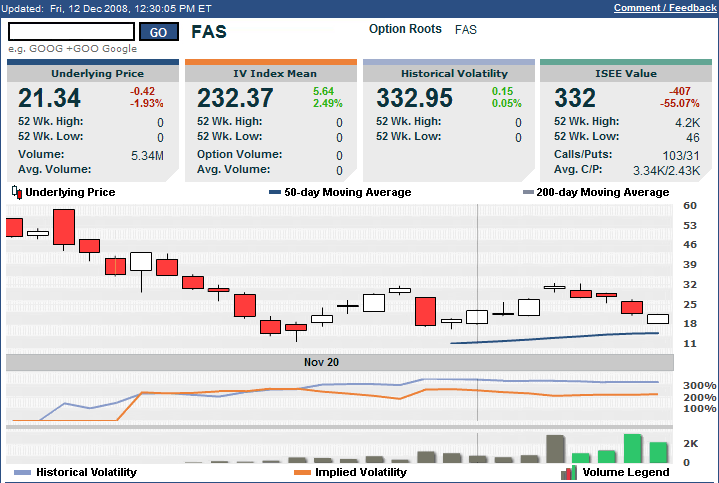Are FAS Options Cheap with an Implied Volatility of 232?
Generally the thought of buying some options on the cheap is not consistent with an implied volatility (IV) of 232.
Today, I have a counterexample to consider.
Take the case of FAS, one of the new Direxion triple leverage ETFs. FAS is intended to track 300% of the price performance of the Russell 1000 Financial Services Index. In the recent market environment this has proven to be a daunting task, resulting in FAS racking up a 30 day historical volatility number of 332 – a full 100 points higher than the current implied volatility.
In practical terms, an IV of 232 translates into an anticipated average change of 14.6% per day. For comparison purposes, an IV of 332 translates into an average daily move of 21%. So far the mean one day change in closing prices for FAS has been 17.4%. Looking at recent history, an implied volatility of 232 may turn out to be a bargain and options in FAS may not be as expensive as they look…



3 comments:
Can you explain the distribution date and its effects with FAS, FAZ, TNA, etc? THX
Hi Anon,
I have not seen anything related to the Direxion ETFs (FAS, FAZ, TNA), but Direxion has announced both distributions and splits from some of their mutual funds.
Since their policy is not to announce distributions in advance for their mutual funds, I wouldn't expect to hear anything on the ETF side until it was already a fait accompli.
For reference:
Direxion distributions
Direxion reverse splits
Let me know if you have heard something else.
Cheers,
-Bill
Over time FAS/FAZ tend to lose money. These ETFs are good only for daytrading and very short-term plays. If you put them on the same graph, they're not a mirror reflection of each other.
Post a Comment